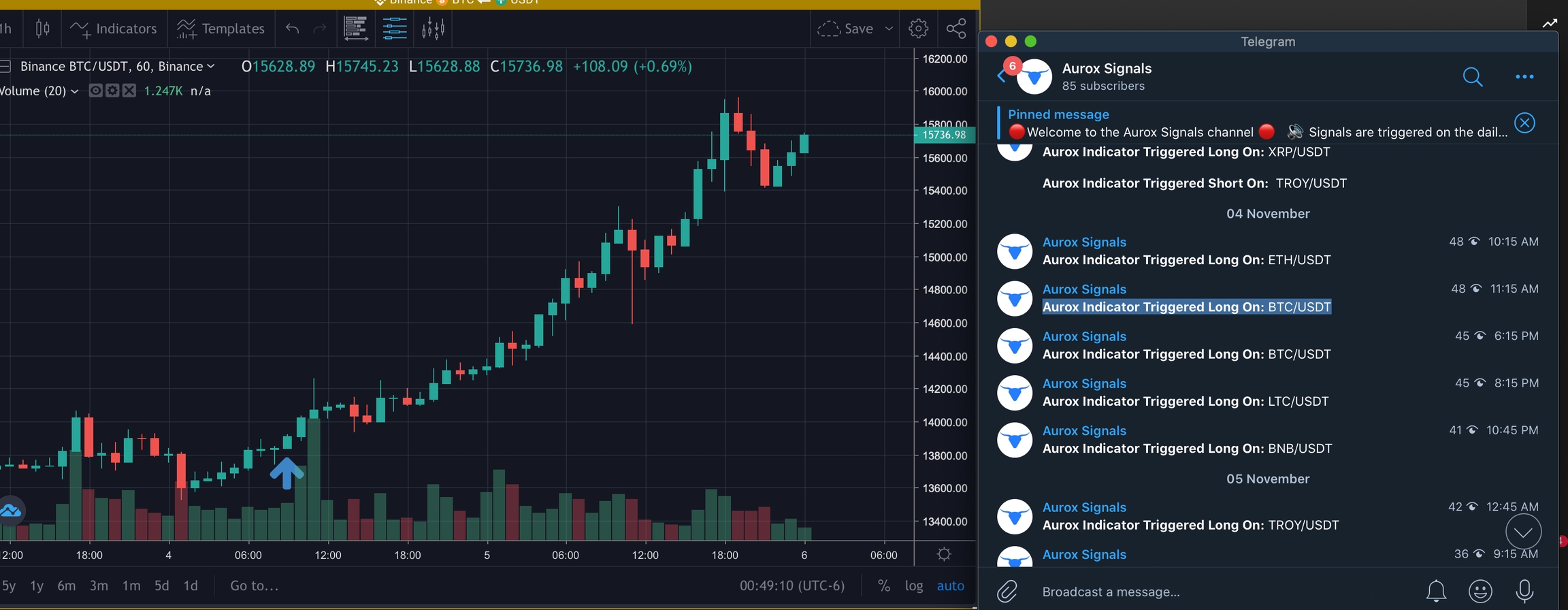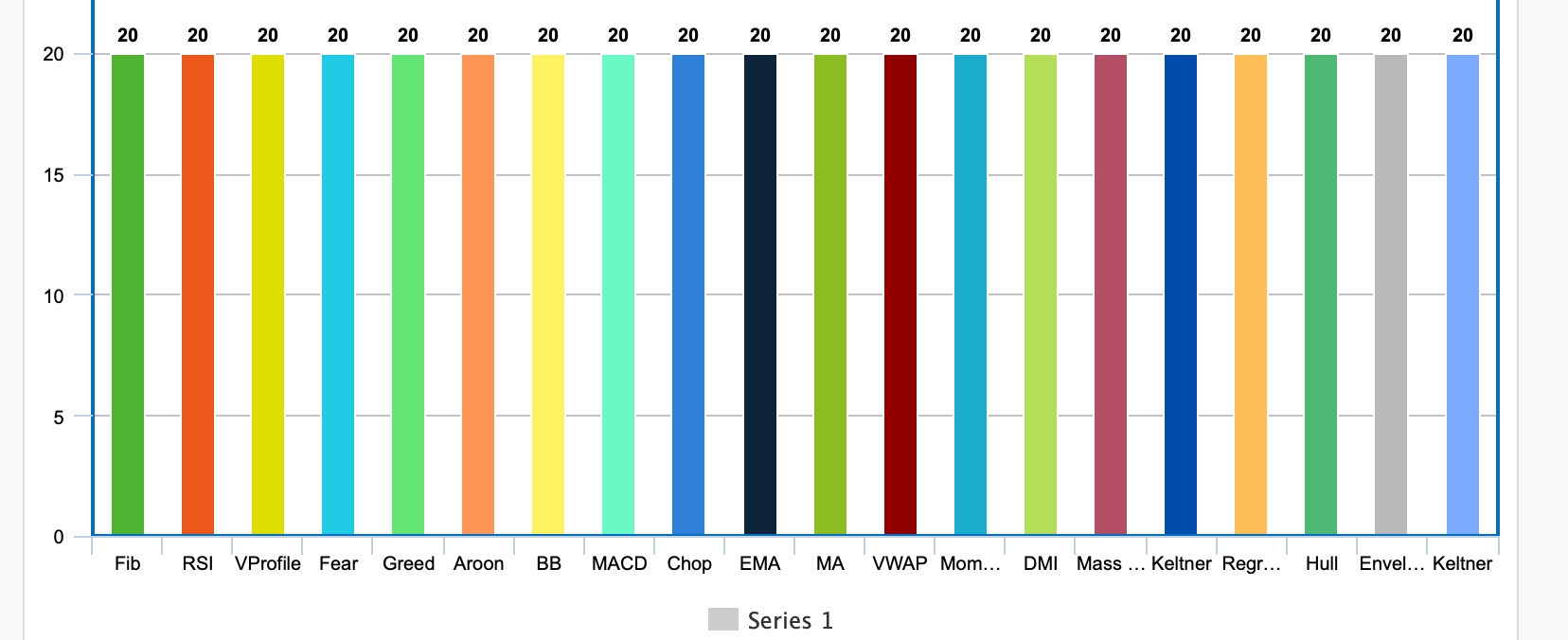How The Aurox Indicator Functions - Part 2
If you're reading this without getting accustomed with the terminal or reading part 1.. start here. This is part 2 for a reason, you need to absorb everything we've discussed in part 1.
We spent over a year developing our idea, our indicators, our platform... and originally it was only for our own use. Here's some examples of how the Aurox Indicator has worked recently:

Prelude
Before I even begin, you need to keep in mind that news is a huge driving force of cryptocurrency, especially Bitcoin. You should already know this, it's not anything new. It's the case with crypto, it's the case with stocks. Keep that in mind when taking action on open triggers.
When I refer to open triggers, I'm referring to Aurox indicator signals on intervals that are still open. For example, if we see a green arrow underneath today's daily candle, that is an open long trigger. Today hasn't closed, so the trigger is open.
Now, if we have an open trigger and the news everywhere is bullish, chances are the trigger is accurate. If the trigger happens when bad news comes out, maybe we should wait until the candle closes. Simple. But that's not the only way to interpret open triggers.
Remember: We are only looking at higher intervals such as Daily and Weekly (and everything in between) in the examples below.
Open Signal Triggers
So how do we make sure we don't make bad decisions?
Well first, we need to understand how they form. As discussed before, Aurox indicator takes into account multiple different data points and algorithms. It waits until the right time to trigger an alert. Imagine a bar graph composed of different data points, each one trying to hit a maximum of 20. When all of them are "full" (or have reached 20), the indicator triggers on the chart. For example:

In a case like the above, it would trigger the indicator. But let's say after they have all hit 20 one of them dropped back down below 20. The indicator would revert because not all of the data points have filled their requirements. Like so:

But 9 out of 10 times, when a trigger happens then reverts, it will trigger on the next candle. Why? Because every other data point has hit their requirements and only one of them has dropped just slightly. The majority of the time the data point will fall in line again and the indicator will reappear.
This might be a bit confusing, but read over it again, and understand it. In general, all it means is if we see a trigger happen on a candle that is open, pay Attention.
Let's go back to the original question, how do we make sure we don't take the wrong open trigger calls? Considering it's not 100%?
This goes back to the first article, and the articles that will follow this one.
Let's say we notice the indicator trigger for a long. We're not sure whether the trigger will remain, or revert. The first thing we need to look into is whether the higher intervals have triggered the same directional movement. If we look at the weekly and 2 weeks ago it triggered a downward red arrow, we need to be extremely cautious. If on the other hand, 2 weeks ago, the trigger was an upward green arrow, then we can start to think about making a decision.
But again, I said, "think about making a decision. I didn't say "take the order 100%!". There is still a bit more to it than blindly following the indicator. We'll get to the rest in a bit.
Final Thoughts
In this article, we learned how to utilize open trigger.
It's not the most complex thing;
Soon as we see a trigger, we pay attention.
We then compare the trigger direction with the higher intervals.
If the higher interval shows green and the trigger is green, we can think about taking action. Or vice versa.
If an open trigger happens, and reverts, it will appear again very soon. (Most likely in the next candle)
That's it.. That's the second part and one step further into using Aurox to it's max potential.
Last updated